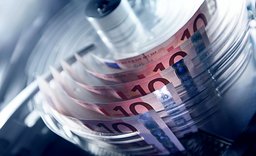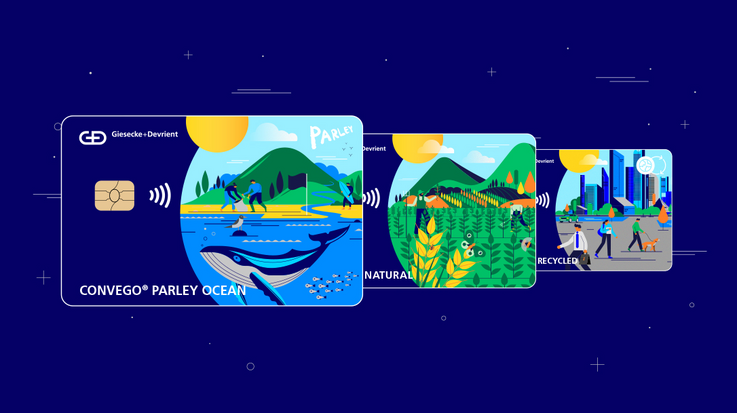
Environment
Reducing our ecological footprint
We are working consistently to reduce the impact of our economic activities on the environment. We start with ourselves by systematically introducing resource-saving processes and technologies at our company locations worldwide. We also join forces with partners along the value chain: sustainability aspects such as material selection and emissions reduction play a central role in the new development and continuous optimization of our products. We are also involved in various networks such as the UN Global Compact and the Carbon Disclosure Project (CDP) and are a founding member of the "Munich Business Climate Pact".
Climate protection at G+D: on the way to Net Zero
As a company, we are doing our part to limit global warming to 1.5 degrees. We therefore want to reduce our emissions to zero by 2040. Our voluntary climate targets meet the highest scientific standards and are based on the criteria of the Science Based Targets initiative (SBTi). We expect our targets to be validated by SBTi in 2024.
Our goals according to SBTi:

What we have already achieved:

Our decarbonization roadmap
Our impact on reducing emissions in Scope 1 and 2 in the area of energy is particularly high. We purchase almost all of our electricity from renewable sources (2023: 98 per cent) and are also committed to building our own plants for sustainable energy generation. At the same time, we are continuously reducing our energy consumption wherever possible. For example, when it comes to heating and cooling consumption in our buildings: we achieve significant savings here by insulating tanks and pipes, switching to more efficient machines, lowering the heating temperature, insulating buildings and implementing technical solutions such as linking our production machines to the central cooling system.

Sustainability in the G+D product portfolio
With our products and services, we want to support our customers in achieving their own sustainability goals and also enable them to fulfil their customers' requirements for sustainable products. Our product development follows the "sustainability-by-design" approach: this means that we consider the entire life cycle of a product right from the start:

In 2024, we have specifically included "sustainability-by-design" criteria in the requirements for the product development process. From the procurement of materials to the handling of the product after its end of use. In this way, we can promote product innovations and technologies in a targeted manner. And that makes us a pioneer when it comes to resource-saving security technologies.
Sustainable product examples

Computer software also causes CO2 emissions. We design and develop sustainable software solutions that keep CO2 emissions as low as possible. To this end, we develop software solutions with optimized energy consumption. They consume fewer physical resources and use the energy they need more intelligently. In this way, we help to reduce the digital CO2 footprint of our customers.
Digital Twins

A major lever in the sustainable transformation is the digitalization of our products, because digital means dematerialized. We are talking about "digital twins": a digital twin is the digital model of a real object. We supplement existing solutions with digital components to give our customers more freedom of choice. Such as the eSIM, which is installed directly in the mobile phone and thus requires less material and transport than the physical SIM card. Or a payment card that you carry in your wallet as a physical version and have on your mobile phone as a digital version. Other examples include central bank digital money (CBDC) as a supplement to cash, as well as digital identities in addition to physical documents – for us, physical and digital products and services go hand in hand as "digital twins".
Get in touch
If you have any questions about our end-to-end business solutions or about our SecurityTech company, seek expert advice, or want to give us your feedback, our team is here to support you, anytime.









